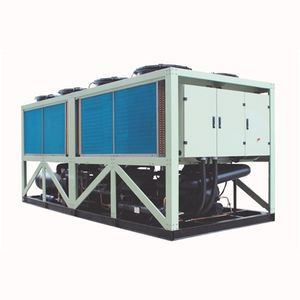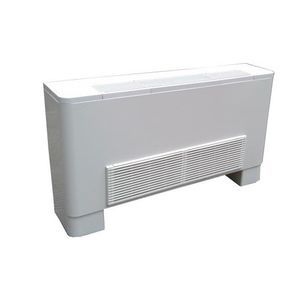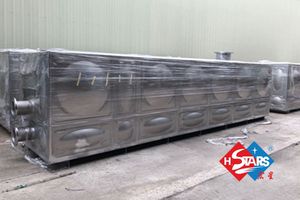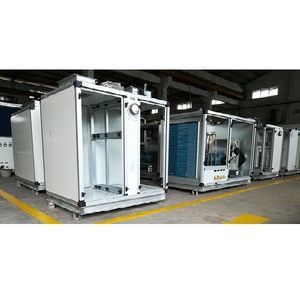
- Industrial machines and equipment
- Heat Exchanger and Refrigeration
- Air cooler
- H.Stars (Guangzhou) Refrigerating Equipment Group Ltd.
- Products
- Catalogs
- News & Trends
- Exhibitions
Air chiller industrialair-cooledscrew compressor





Add to favorites
Compare this product
Characteristics
- Material
- air
- Applications
- industrial
- Other characteristics
- air-cooled, screw compressor, pressure, air-cooled, screw
- Power
Max.: 2,368 kW
Min.: 16.5 kW
- Maximum temperature
Max.: 0 °C
(32 °F)Min.: -35 °C
(-31 °F)
Description
Air-cooled Low Temperature Glycol Chiller
H. Stars Air cooled Screw- type Low Temperature Chillers are specially designed and manufactured for the applications like cold storage, food processing, industrial cooling, etc. There are 350 models of standard configuration, cooling capacity from 16.5kw to 2368kw. The outlet chilled water(glycol) temperature range is from (-35℃) to 0℃.
Main components of Air-cooled glycol chiller:
1) Compressor
The compressor of Low temperature air-cooled chiller adopts a well known brand screw compressor with a 5:6 screw rotor design, which is 20%-30% more efficient than a typical compressor. Applicable to environmentally friendly refrigerant like R134A, R407C,R404A with compressor-specific motor, low failure rate,
stable and reliable operation, no fault operation time:50000-80000 hours. The products have obtained two international quality certifications of ISO9001 and ISO9002and multinational patents in Europe and America.
2) Fin condenser
Intelligent design to reduce fan energy consumption while achieving maximum heat transfer. Intelligent copper tube design reduces the pressure drop in the coil (the maximum temperature drop is 0.63K when the refrigerant is R404).
Other H.Stars (Guangzhou) Refrigerating Equipment Group Ltd. products
Other Cooling Equipment
Related Searches
- Chiller
- Liquid chiller
- Heat exchanger unit
- Water chiller
- Air chiller
- Liquid/liquid heat exchanger
- Industrial chiller
- Compact chiller
- Tubular heat exchanger
- Stainless steel chiller
- Stainless steel heat exchanger
- Blast chiller for the food industry
- Gas/liquid heat exchanger unit
- Air-cooled recirculation chiller
- Oil chiller
- Laboratory recirculation chiller
- Industrial heat exchanger
- Compact heat exchanger unit
- Process water cooler
- Copper heat exchanger
*Prices are pre-tax. They exclude delivery charges and customs duties and do not include additional charges for installation or activation options. Prices are indicative only and may vary by country, with changes to the cost of raw materials and exchange rates.






















